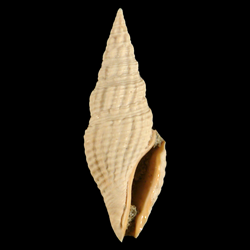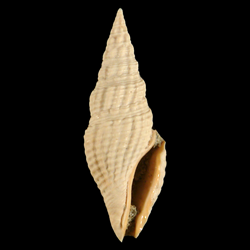
Clavatulidae

- Phylum: Mollusca
- Class: Gastropoda
- Order: Neogastropoda
- Family: Clavatulidae
Overview
Key morphological features: The Clavatulidae are medium sized gastropods with generally high-spired, fusiform shells, a medium-length siphonal canal. The shell exterior ranges from smooth to spiral cords that are accompanied by axial ribs in some species, producing a cancellated pattern. Most species also have a prominent sutural ramp ending in strong or weak whorl shoulders that in some species also feature a spiral ridge or knobs. The aperture is not occluded, is often smooth internally, and a strong or weak anal canal is often located at the base of the sutural ramp. Sources: Davies, A.M. 1971. Tertiary Faunas Vol. 1, second edition. New York: American Elsevier Publishing Company, Inc. 571 pp.; Bouchet et al. (2011).
Geological range: Upper Cretaceous to Recent (Davies, 1971).
Geographic distribution: A distributional map for modern Clavatulidae may be accessed from OBIS. A distributional map for ancient Clavatulidae may be accessed from the Paleobiology Database.
Diversity: There are 119 recognized living species of Clavatulidae and 14 genera (WoRMS database, unvetted). The Paleobiology Database recognizes 8 fossil genera and 169 fossil species of Clavatulidae (unvetted).
Paleoecology: The Clavatulidae are marine gastropods, but very little is known about their ecology. Their taxonomic position within the Conoidea suggests that at least some species are predators. Source: Tunnell et al. (2010); Puillandre et al. (2011).
Phylogenetic status: Monophyletic. The molecular phylogenetic analysis of Puillandre et al. (2011) supports the monophyly of Family Clavatulidae.
